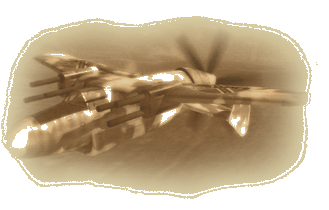
 |
||
 |
 The Valiant originally entered service in 1934, rolling off the Bell assembly line in Marietta, Georgia in November of that year. This small and agile fighter was an ideal dogfighting craft, capable of out-turning almost every opposing craft. The early models of the Valiant were equipped with a Pratt and Whitney P7 750 horsepower engine; the Mark I version of the aircraft lacked the acceleration and top speeds of many contemporary planes. The inclusion of a Rolls Royce Morgana engine solved that problem, increasing the engine capacity to 950 horsepower and the top speed to more than 300 m.p.h. The Mark II Valiant quickly become the standard configuration, as the Mark Is were upgraded. In order to gain speed and maneuverability, the Valiant sacrifices payload; standard weapons load-out on a Valiant is six light machine guns (though most Valiant pilots make up for this deficiency by arming themselves with magnesium rounds for the machine guns as well as a full complement of rockets). As an added nuisance, the position of the craft’s machine guns interferes with the pilot’s vision to port and starboard; as a result, many pilots periodically waggle their wings to make sure an enemy isn’t approaching in the blind spots. The Valiant’s unusual design—a cruciform tail and a pusher prop—limits the craft’s ability to use runways. As a result, the airplane must approach a runway at a shallow angle (approximately 10 degrees, as opposed to the 30 to 45 degrees common in most aircraft), or risk damage or destruction. Valiants commonly have a reputation for being runway hogs since their landing requirements necessitate longer runways. The Valiant typically serves as a point-defense fighter (protecting fixed installations against attack) due to its long runway requirement and low operational range (a mere 350 miles). |
|
 |
||
 |